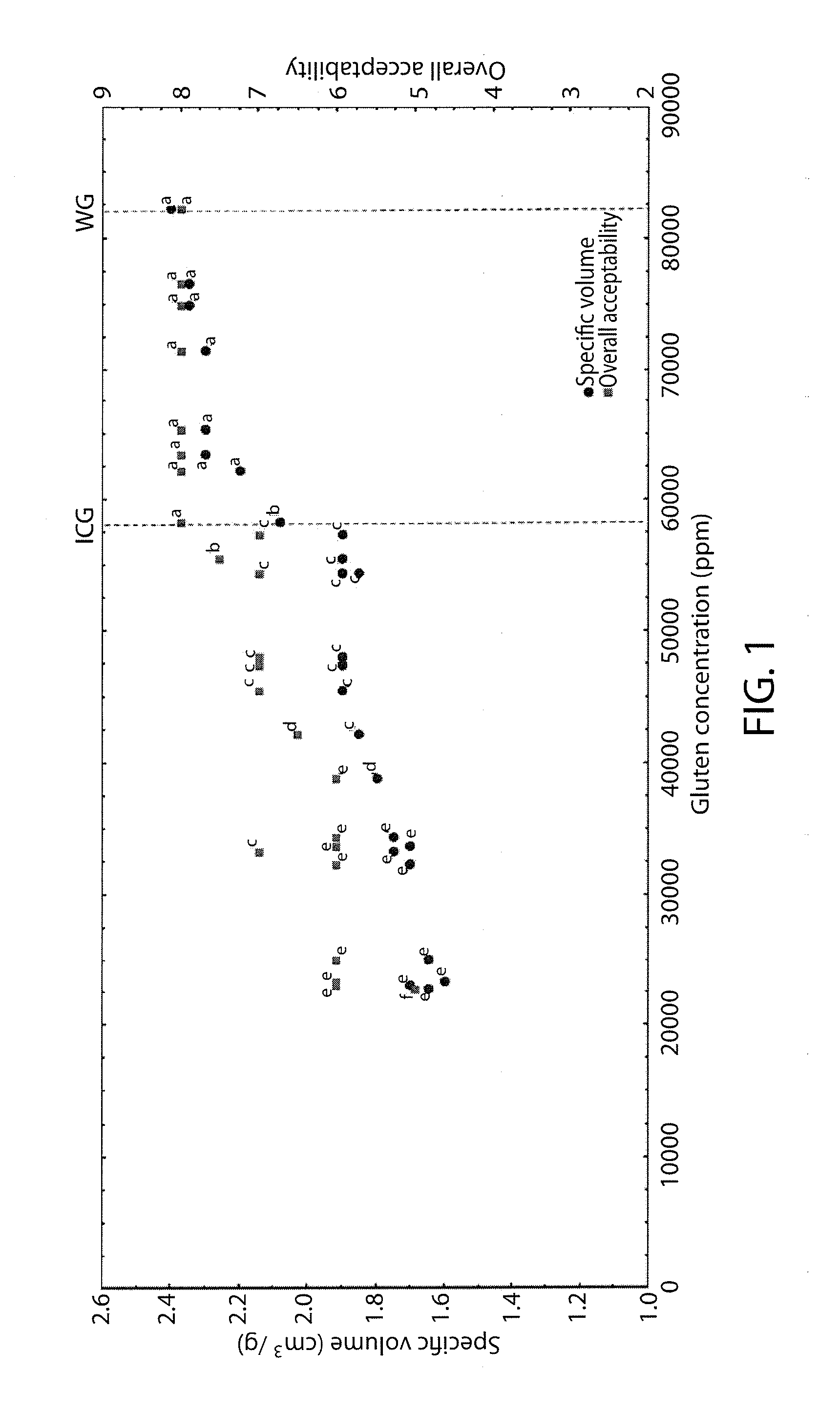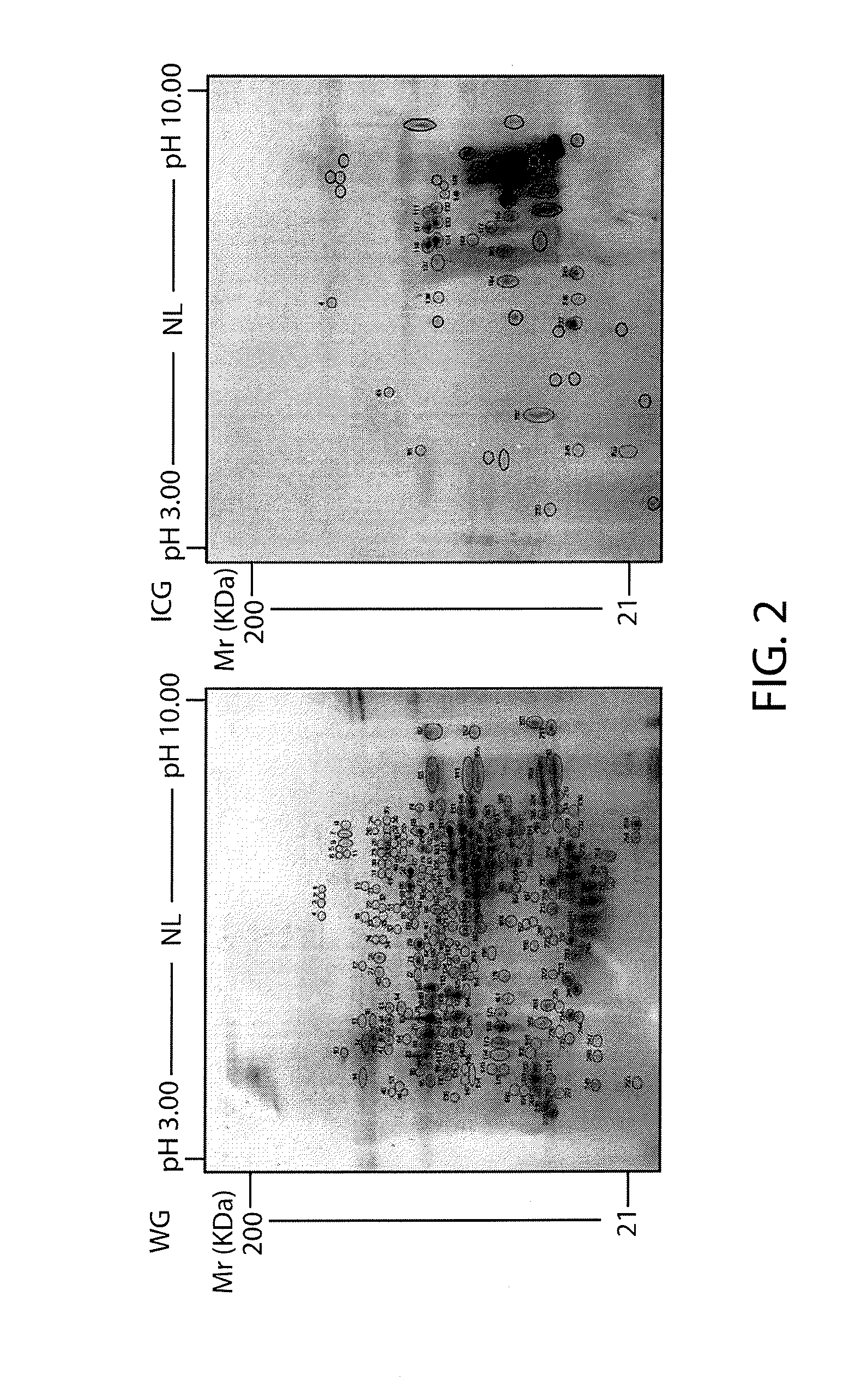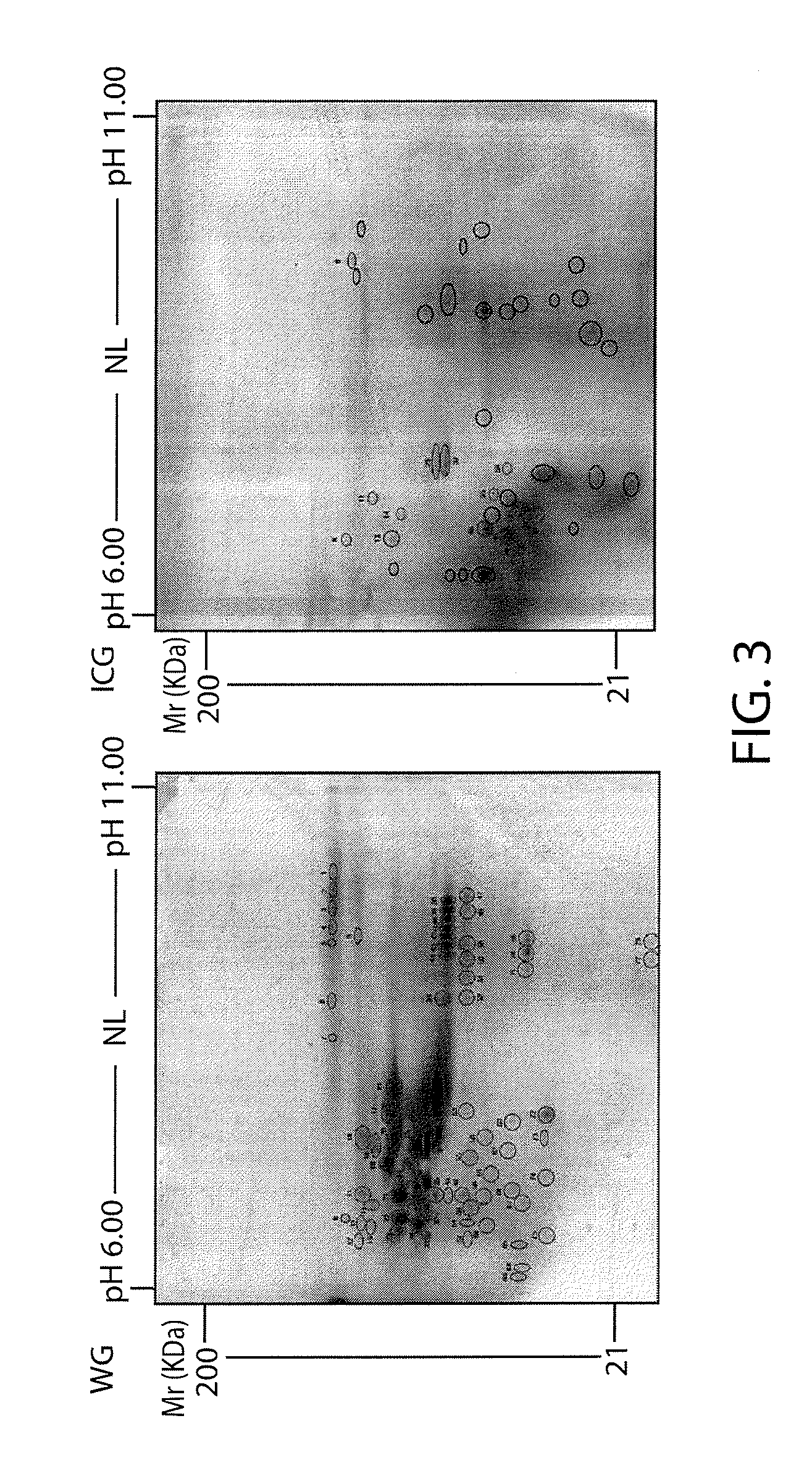Method for partial degradation of gluten
a technology of partial degradation and gluten, which is applied in the field of partial degradation of gluten, can solve the problems of affecting the quality of gluten, the prevalence of subclinical cd, and the prevalence of celiac disease (cd), and achieve the effect of reducing the gluten conten
- Summary
- Abstract
- Description
- Claims
- Application Information
AI Technical Summary
Benefits of technology
Problems solved by technology
Method used
Image
Examples
example 1
Microorganisms and Enzymes
[0033]Strains of lactic acid bacteria, Lactobacillus sanfranciscensis 7A, LS3, LS10, LS19, LS23, LS38 and LS47, Lactobacillus alimentarius 15M, Lactobacillus brevis 14G, and Lactobacillus hilgardii 51B were selected based on peptidase activities (Di Cagno et al., 2002, “Proteolysis by sourdough lactic acid bacteria: effects on wheat flour protein fractions and gliadin peptides involved in human cereal intolerance,”Applied and Environmental Microbiology, 68, 623-633; Dewar et al., 2006, “The toxicity of high molecular weight glutenin subunits of wheat to patients with coeliac disease,”European Journal of Gastroenterology &Hepatology, 18, 483-91), and used in this study. Strains were propagated for 24 h at 30° C. in modified MRS broth (Oxoid, Basingstoke, Hampshire, United Kingdom), with the addition of fresh yeast extract (5%, vol / vol) and 28 mM maltose, at the final pH of 5.6 (mMRS). When used for sourdough fermentation, cells of lactobacilli were cultivate...
example 2
Sourdough Fermentation to Obtain Flour Dough with Partially Degraded Gluten
[0034]The main characteristics of the wheat flour (from Triticum aestivum v. Appulo) used were as follows: moisture, 10.2%; protein, 10.3% of dry matter (d.m.); fat, 1.8% of d.m.; ash, 0.6% of. d.m.; and total carbohydrates, 76.5% of d.m. Wheat flour and tap water containing ca. 109 cfu / g (cell density in the dough) of each lactic acid bacterium were used for sourdough fermentation at 30° C., under stirring conditions (ca. 200 rpm). Sourdough fermentations were carried out varying, one by one, the following parameters: dough yield (DY, dough weight×100 / flour weight), 500, 333 and 250; time of fermentation, 15, 24 and 48 h; and fungal proteases E1 and E2 (ratio 1:1), 0, 50, 100 and 200 ppm. The flour dough obtained after fermentation was characterized.
example 3
Characterization of Flour Dough
A. Immunological Analyses
[0035]The concentration of gluten of the freeze-dried flours was determined through immunological analyses using the R5 antibody-based sandwich ELISA. The analysis was carried out with the Transia plate detection kit, following the instructions of the manufacturer (Diffchamb, Västra, Frölunda, Sweden). The R5 monoclonal antibody and the horseradish peroxidase-conjugated R5 antibody were used.
[0036]As determined by R5 antibody-based ELISA, the untreated wheat flour contained ca. 82,000 ppm of immune reactive gluten. The degradation of gluten was proportional to the increases of dough yield, time of fermentation and concentration of fungal proteases. The limit of ca. 20,000 ppm of residual gluten was identified as the lowest concentration of gluten for making breads without the use of structuring agents.
B. Two-Dimensional Electrophoresis (2-DE) Analysis and Isoelectric Focusing (IEF)
[0037]Proteins were selectively extracted from ...
PUM
 Login to View More
Login to View More Abstract
Description
Claims
Application Information
 Login to View More
Login to View More - R&D
- Intellectual Property
- Life Sciences
- Materials
- Tech Scout
- Unparalleled Data Quality
- Higher Quality Content
- 60% Fewer Hallucinations
Browse by: Latest US Patents, China's latest patents, Technical Efficacy Thesaurus, Application Domain, Technology Topic, Popular Technical Reports.
© 2025 PatSnap. All rights reserved.Legal|Privacy policy|Modern Slavery Act Transparency Statement|Sitemap|About US| Contact US: help@patsnap.com



